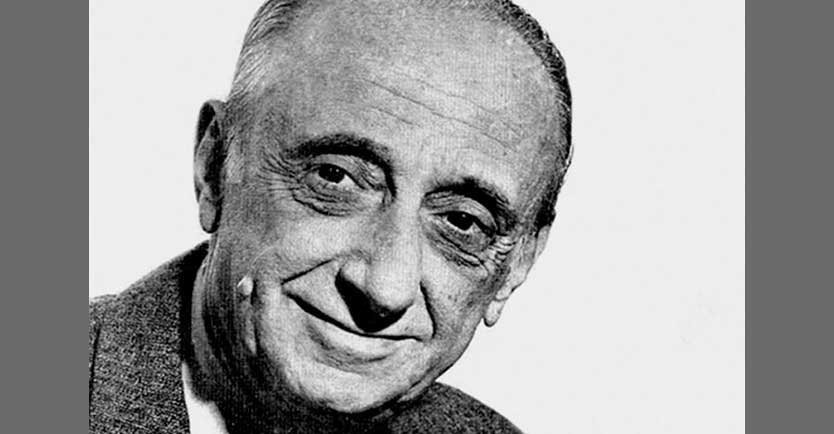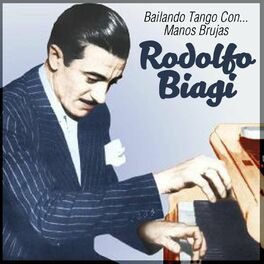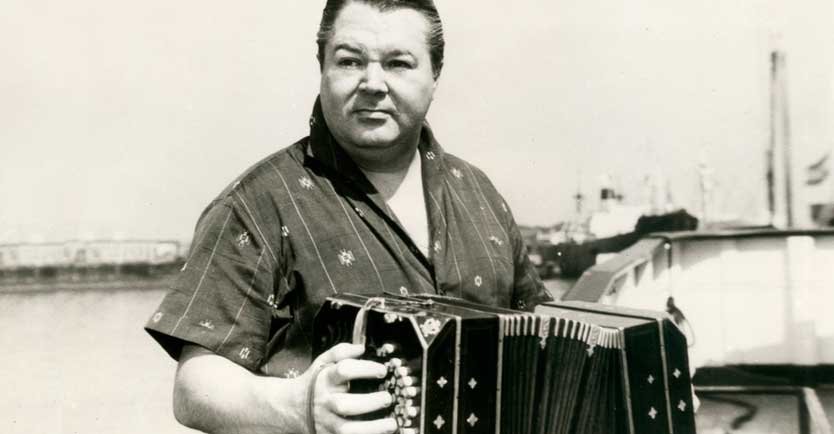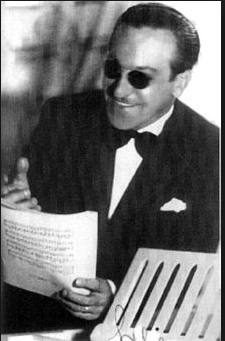Dancing Tango But Hating Tango Music
Music plays a pivotal role in our lives, especially for dancers.
To some, it may not matter what music is playing as long as the body moves. On the other hand, some dancers can’t dance their best without the “right” music. Yes, the same struggle applies even to tango dancers whose passion for the dance seems unmatched!
The pain that tango dancers feel when their passion is unrequited as they struggle to love tango music is an issue that many can relate to.
It’s music that often supports the urge to dance the tango, so it can feel like a roadblock when you don’t love the music. Tango, then, becomes an itch you can’t scratch.
Tango music is often cited as a fundamental component of tango dancing, but the truth is that you don’t need to love it to keep loving dancing tango.
Let’s explore tango music and its inseparable existence with the dance and the dancer.
Tango Music
MasterClass defines tango music in “Guide to Tango Music: A Brief History of Argentine Tango” as a music style that originated in Argentina and Uruguay.
Tango has the influence of both regional folk music and European classical dance music, and it dates back to the 19th century.
Its story? Quite a long, interesting one!
At some point in the mid-19th century,
European immigrants in Argentina and Uruguay combined European salon music and dance traditions with African rhythms from the western hemisphere.
And then tango music was born!
Buenos Aires and Montevideo fostered the new music genre, reaching many musicians such as Rosendo Mendizábal, Vicente Greco, and Carlos Gardel. Tango music lived through the centuries and set foot on the rest of the world. Tango is still very much alive to this day!
How Do You Know It’s Tango?
With all the music genres fostered before, during, and after tango, it can be challenging to know if the music you’re listening to is tango. Especially if you have little to no knowledge about the music itself, tango could just be another style of music.
According to Dance Facts in “Tango Music – History and Characteristics of Tango Music,” you know it’s tango when you find the following:
“Every five sections of tango music are made out of 4 phrases, which consist of 4 measures or 8 single-time beats, thus enabling each section to have 32 sing-time beats.
Structure of almost every tango song fits neatly to the form of five distinct parts of alternating verses and chorus. In almost every tango song, the outro of the song piece includes a similar melody as in first two verses, but with the addition of an instrumental solo or an addition of another musical instrument. The energy of the outro can also go up, leading to the final crescendo which is called “chum-chum” (the final two notes of a song).”
Tango dancers typically know the structure of tango music because it’s the foundation of their dance.
But apart from the structure, the song’s theme also contributes to its identity. Tango music is often associated with love stories. Indeed many of the tango songs are about heartbreak and longing for a distant loved one. Dance Facts also said:
“It is very rare to find tango music that consists only of beats. Traditionally, the more “romantic” or “sensual” the tango song is, the musical ensemble will prioritize melody over the underlying beat and rhythm.”
Tango Orchestras and Songs
If tango music strongly influences a tango dancer’s performance, it’s inevitable for many to have favorites. In fact, if you ask a professional tango dancer about a tango orchestra or tango singers, it’s impossible not to mention at least one they love!
In our article “5 ARGENTINE TANGO ORCHESTRAS THAT YOU MUST KNOW,” we shared a list of iconic musicians who have been very popular in tango music:
Juan D’Arienzo, El Rey del Compas
Rodolfo Biagi, Manos Brujas
Annibal Troilo, Pichuco
Carlos di Sarli Rusomano, El Señor del Tango
Miguel Caló
And for tango dancers or enthusiasts who want to get to know tango through beautiful songs, we listed the following titles in our article, “5 MOST ROMANTIC ARGENTINE TANGO SONGS YOU SIMPLY MUST KNOW”:
Yo no sé porque te quiero by Francisco Canaro and Ivo Pela
Al Compás del Corazón (Late un Corazón) by Homero Exposito and Domingo Federico, orchestrated by Miguel Calo, and sung by Raul Beron
Esta Noche de Luna by Graciano Gomez and Jose Garcia, with lyrics by Hector Marco and voice by Alfredo Rojas
Te Quiero by Francisco Canaro and Ada Falcon
Vida Mía by Osvaldo Fresedo
Having helpful introductory knowledge about tango music will give you a better understanding of the dance.
Exploring the genre undeniably helps you appreciate it even more and make the most out of your experience.
Should It Be Music to Your Ears?
Tango music has a long history; every piece is a work of art.
But if we add your preferences and tastes to the equation, should tango music be immediately attractive and “music to your ears?” As we’ve repeatedly said,
tango music plays an integral part in dancing tango.
Generally, music plays a role in any kind of movement for dancers!
The Editors in the article “Why Is Music Important? (17 Reasons)” said that music does the following:
Reduces anxiety and stress
Lifts our mood
Helps us focus
Boosts our energy levels
Improve memory and cognitive skills
Promotes better sleep
Connect us with other people
What matters most to dancers is how music helps us express ourselves. It’s a creative outlet that allows us to exhibit our personalities and feelings.
We may not be able to relate to the lyrics of a tango song, but its melodies can still help us capture the essence of tango.
“Plus, expressing yourself through music can boost your confidence. When you pour your heart and soul into a song, it can be a very empowering experience. You may find that you feel more confident in other areas of your life as well when you express yourself through music.”
So, when a tango dancer doesn’t love tango music or a particular song, it really takes hold of the dancer to break through the barrier and dive into their creative expression. But as easy as that sounds, it’s not at all easy to do. More challenges and conflicts arise as more communities rely on alternative tango.
What About Non-Tango?
If you haven’t heard of the term “non-tango” before, perhaps you’ve heard of it as “tango nuevo.”
Astor Piazzolla was the most globally famous tango evolutionist, leading international audiences to think of his music when they think of Argentine tango.
One of his greatest hits is Libertango in 1974, which is a combination of “libertad” (Spanish for liberty) and “tango,” symbolizing his break from classical tango. David said in “The Origins of Libertango (Astor Piazzolla)”:
“Even before ‘Libertango,’ Piazzolla was fond of blurring the lines between tango and other forms of music. In the 1950s, while in Paris, Piazzolla abandoned his bandoneon, believing classical music was his destiny.”
Tango nuevo proves that tango music has grown and adapted to different styles and trends.
“The tango is known as one of the most versatile musical and dancing styles in the world, being able to morph quickly with the changes in musical styles, social environment or even changes in clothing fashion! In recent years, tango music evolved into many new styles, including Tango Nuevo, Electro Tango and others.”
In an alternative milonga where tango dancers dance to non-tango music, a DJ plays the following genres:
Modern Tango: Music by tango orchestras recorded after 1960.
Nuevo Tango: Astor Piazzolla and his followers’ music.
Tango Extranjero: Music from non-Argentine cultures with a tango rhythm but uses different instrumentation.
Tango Fusion: Music with some tango music characteristics and other genres.
Electrotango: Tango music with electronic dance music.
Non-tango: Music that doesn’t have tango rhythm or instrumentation but elicits aspects of tango movements.
Neotango: Music that combines tango fusion, electrotango, and non-tango music.
Basically,
tango alternative music is all genres that aren’t classic tango but are played for dancing tango.
Unsurprisingly, many can’t understand why tango dancers dance to non-tango music because dance and music usually coexist. However, Tango Voice shared that the birth of tango alternative music comes with a reason:
Tango Alternative Music is more readily accepted by dancers, particularly new recruits to tango, in North America and Europe than is Classic Tango music.
Cultural evolution demands the inclusion of contemporary modifications of tango into the repertoire of music played at milongas.
It’s an interesting take because it shows how tango grew as a genre in different countries in different generations. Some tango dancers knew tango first through non-tango music, and some tango dancers heard of non-tango music through tango. However, it’s undeniable that it somehow takes away from the traditional aspect of tango music, which leads us to the next question…
Is It Still Tango If I Don’t Love the Music?
Let’s say you’re a beginner in tango dancing and trying your best to appreciate tango music so you can learn how to dance it. If you just can’t feel connected with tango music and choose another genre to dance the tango, is it still tango?
The struggle with hating tango music as a tango dancer is valid because, somehow, it’s through music that you express yourself.
What the music makes you feel will seep through your movements. So,
if the music sounds like a chore to you, your dance can also feel like one.
This thought can also make you ask what makes tango. Is tango a dance or music?
If it’s a dance, the music may not matter. But if it’s music, then dancing to something else isn’t really tango.
Tango Voice also shared the following arguments in resistance to playing tango alternative music:
“Tango can only be danced to tango music. If one is dancing to music that is not tango music, one is not dancing tango.
Dancing to Classic Tango music is part of the Traditional Tango culture of Buenos Aires, which many tango dancers desire to preserve.
Playing Alternative Tango music to attract people to tango dancing does not guarantee that they will eventually like dancing to Classic Tango music. Therefore, Tango Alternative music often becomes a persistent part of the foreign tango subcultures into which it is integrated.”
It’s a never-ending cycle that tango dancers can find themselves in. However,
we can’t change the fact that tango music and tango dance came into this world together.
No matter how both evolve continuously, neither can exist without the other.
To shine the light on how we can solve this conundrum, let’s think about what Argentine tango dancer Carlos Gavito said:
“The important thing is to know why we want to dance. We dance a solitude that we have inside us and cannot occupy with anything. This gap, that emptiness to which we put movement is the TANGO.”
Perhaps,
every dancer can learn about tango first by understanding the foundations of music and dance.
It’s always like that; taking every step carefully, memorizing the notes and the steps, and familiarizing a whole song.
Eventually, you can dive deeper into the techniques and the culture that comes with tango and ask more significant questions. What’s the purpose of it? What feeling does this give me? Why do you want to dance?
Once you find the answer, you can break free from the different tango genres, arguments, and opinions.
When you find what makes you love dancing tango, nothing else matters but that.
Tango: There’s Never Just One Truth
Dancing tango while hating tango music isn’t the end of the world, even if it feels like it.
It’s a real struggle, especially when you’re passionate about tango and dedicated to fully understanding it. But there’s never just one truth or opinion about tango.
Some dancers dance to complicated classical or jazz pieces, while others only dance to tango from the Golden Era. Some are open to experimenting with tango orchestra, while others are content with classic tango singers. Many tango dancers plainly refuse tango music, too.
If you find yourself stuck in the same dilemma, remember that it’s up to you to make your own truth. The beauty of tango lies in its flexibility and versatility!










